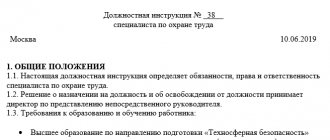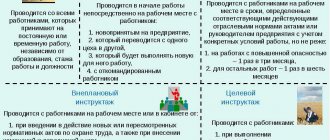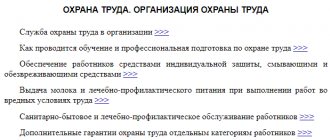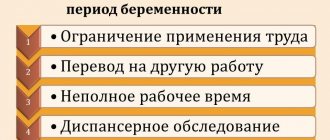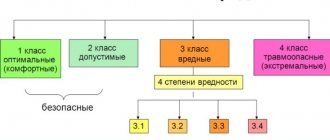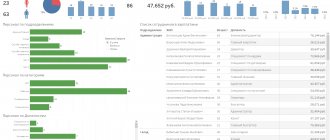Working in an enterprise requires employees to produce a certain result. It is the solution to the question of what this result should be that falls within the professional competence of the standardization engineer. He is tasked with determining what volume of products an employee should produce per unit of time or how many operations he should perform per unit of time.
What does a standards engineer do?
The standards engineer sets the workload that should be borne by the various employees of the company. It determines how much labor is actually spent on a particular operation during the production process. After this, he establishes the volume of various operations that a particular employee of the enterprise must perform.
In particular, the standardization engineer has the following responsibilities:
- analysis of existing standards, determination of how rational and justified they are, what level of tension is required from employees to comply with them;
- achieving the same level of stress required from workers in similar areas under similar organizational and technical conditions;
- control over whether the adopted standards comply with the requirements for the rational organization of work activities;
- determination of economic benefits from the application of labor cost standards that comply with technical conditions;
- identifying labor standards that are incorrect or outdated and ensuring their timely replacement with the introduction of modern standards;
- determining the number of employees required in the organization in individual structural divisions or in various areas of activity;
- identifying discrepancies in the number of employees in departments or areas with standards and eliminating such a situation;
- development of projects containing plans to revise existing standards, taking into account technical improvements that increase labor productivity;
- participation in project programs to modernize the organization of work processes at the enterprise;
- determination of indicators of labor intensity of products taking into account the growth of labor productivity;
- participation in the development of measures designed to reduce the labor intensity of enterprise products;
- analysis of labor processes at the enterprise using the latest technical means, including computer equipment;
- control over the correct use of labor standardization tools in the company’s structural divisions, in particular, tariff rates and schedules, prices and grades of work.
The responsibilities of a labor standards engineer, among other things, also include instructing employees regarding the labor standards introduced at the enterprise.
Job description of a leading engineer for organization and regulation of labor
1. General Provisions
1.1 This job description establishes the job responsibilities, rights, service relationships and responsibilities of the leading engineer for the organization and regulation of labor at the iron foundry (hereinafter referred to as LZ) of PJSC "Enterprise" (hereinafter referred to as the enterprise).
1.2 A person with a higher professional (economic or engineering-economic) education and professional experience in the field of labor organization and remuneration of at least 5 years is appointed to the position of leading engineer for organization and regulation of labor (hereinafter referred to as leading engineer) of the LZ.
1.3 The leading engineer reports functionally to the head of the planning and economic department (hereinafter PEO) of the enterprise, administratively to the head of the production and economic service - deputy. director of the foundry (LZ).
1.4 The appointment, relocation and dismissal of a leading engineer is carried out by order of the general director of the enterprise upon the recommendation of the head of the PEO.
1.5 In case of temporary absence (business trip, illness, vacation), the duties of the leading engineer, by order of the head of the PEO, are performed by another specialist appointed by the head of the production and economic service, with mandatory familiarization with this job description.
1.6 In his work, the leading engineer is guided by:
- labor legislation in force on the territory of the Russian Federation;
- regulations, instructions, other guidance materials and regulatory documents on the organization and payment of funds;
- orders, instructions, instructions from superiors;
- The company's quality policy;
- norms and rules established at the enterprise;
- this job description.
2 Job responsibilities
The leading engineer is obliged to:
2.1 Carry out the full range of work to improve the organization and standardization of labor, analyze the state of organization and standardization of labor, develop and implement measures to increase worker productivity and production efficiency.
2.2 Analyze the degree of validity and intensity of standards for similar work performed under the same organizational and technical conditions.
2.3 Conduct (as necessary) timekeeping and photographs of working hours in order to identify outdated and erroneously established standards, carry out work to timely replace them with new ones as the organizational, technical and economic conditions of the enterprise and its divisions change.
2.4 Keep records of the quantity, composition and level of compliance with labor cost standards.
2.5 Study the extent and reasons for the discrepancy between the actual time spent and the normative ones, participate in the preparation of proposals that ensure compliance with the established standards.
2.6 Make calculations of experimental and statistical standards of time (production) and prices for basic, one-time and additional work performed by employees of the enterprise, ensure the timely implementation of approved standards in production.
2.7 Conduct research and prepare proposals for expanding the service area and combining professions.
2.8 Monitor the correct application of labor regulations in departments and promptly communicate newly introduced or amended standards and prices to the heads of health care facilities.
2.9 Calculate (based on regulatory technical documents) the optimal number of main workers, taking into account the current situation and the development prospects of the enterprise.
2.10 Conduct a monthly analysis of the level of remuneration of employees of the LZ departments.
2.11 Monitor the execution of work orders for work performed in order to identify inaccuracies in their completion. Enter information contained in work orders into the 1C database and maintain payroll.
2.12 Ensure timely introduction of changes to the staffing schedule of health care units.
2.13 Prepare draft orders, instructions and other documents related to the remuneration of labor protection workers.
2.14 Develop and implement provisions on bonuses for health workers.
2.15 Develop and implement measures to eliminate losses of working time and improve its use.
2.16 Collect, process, analyze, compile reports and store information on issues of remuneration and bonuses for employees.
2.17 Timely and accurately execute production orders of the general director of the enterprise, production tasks, instructions and orders of the head of the PEO, head of the production and economic service (LZ).
2.18 Perform job duties provided for in this job description and the employment contract.
2.19 Comply with the internal labor regulations established at the enterprise.
2.20 Do not engage in activities directly or indirectly detrimental to the interests of the enterprise.
2.21 Constantly improve the results of your professional activities.
3 Professional requirements
The lead engineer must know:
- Fundamentals of labor legislation, regulatory materials and other guidance materials on issues of standardization, organization and remuneration.
- Prospects for the development of the enterprise.
- Standards for a unified system of organizational and administrative documentation.
- Methods for studying and designing labor processes, using working time, determining the economic effect of planned activities, methods for assessing the level of labor organization and management.
- Existing forms and systems of remuneration at the enterprise.
- The procedure for tariffication of work and workers, methods for calculating bonus indicators, methods of accounting and analysis of labor and wage indicators.
- Fundamentals of the production technology of the enterprise's products.
- Methods for determining the number of employees.
- Rules and regulations of occupational health, safety, industrial sanitation and fire protection.
4 Rights
The leading engineer has the right:
4.1 Receive from employees of the health department departments and other employees of the enterprise the information and explanations necessary for him to perform the job duties established by this instruction.
4.2 Providing working conditions necessary for the performance of official duties.
4.3 Use the benefits established by the legislation of the Russian Federation and provided for employees in the collective agreement.
5 Service relationships
5.1 The leading engineer carries out all orders of the head of the PEO and the head of the production and economic service for labor protection.
5.2 The leading engineer interacts:
5.2.1 With the heads of LZ departments on issues of obtaining and providing information related to remuneration, bonuses for personnel, calculation of headcount, time standards, vacancies in departments; statements of time standards and prices; analysis of wage levels by profession; calculating the number of main workers by profession; changes to the staffing table; measures to eliminate lost working time; photos of the working day; calculating standards for basic, one-time and additional work and their implementation in production.
5.2.2 With the accounting department of the accounting department and the IT department on issues of wages: transmits and receives information on the calculation of wages to employees on time-based and piece-rate wages, bonuses, etc.
5.2.3 With the PEO on the provision of reports and analyzes on the remuneration of ChLZ employees, the time standards used and prices; obtaining information about changes in tariffs, average headcount, etc.
6 Responsibility
6.1 The leading engineer is responsible in accordance with the legislation of the Russian Federation for failure to perform or improper performance of job duties provided for in this job description.
Head of production and economic service
https://youtu.be/vtvscPRRslI
What are the requirements for a specialist?
The requirements for a labor standards engineer depend on what category of employee we are talking about. If this is a specialist to whom the category is not assigned, then in this case the standardization engineer can become:
- an applicant who has graduated from a university with an engineering, economic or technical profile; there are no length of service requirements for him;
- an applicant who has received secondary vocational education in the same profile, one of the following requirements has been established for him: work as a technician of the first category for at least three years;
- work in other positions available to an employee with a similar level of education for five years.
Only an applicant who has a higher education in one of the mentioned profiles can be appointed as a labor standards engineer with the second category. He must also have three years of work experience either as a standardization engineer without a category, or in another place where employees who have graduated from a university have the right to work.
Only an applicant who has received a higher education in one of the specified profiles can also be appointed as a labor standards engineer with the first category. Moreover, he must have three years of work experience exclusively as a standardization engineer of the second category.
III.
Analyzes the state of standardization, the degree of validity and intensity of standards, carries out work to improve their quality, ensure equal intensity of standards for homogeneous work performed under the same organizational and technical conditions. Establishes time (output) standards for one-time and additional work associated with deviations from technological processes. Monitors compliance with the requirements of rational labor organization in the established standards when developing technological processes (production modes), determines the economic effect of the introduction of technically sound labor cost standards.
Checks current labor standards in order to identify outdated and erroneously established standards, works to timely replace them with new, more progressive ones as organizational and technical measures are implemented. Determines the number of employees by management functions and structural divisions in accordance with industry headcount standards, identifies deviations of the actual number from the standard number and the reasons for such deviations, develops proposals for eliminating excess numbers. Draws up draft calendar plans for the revision of standards based on the organizational and technical measures planned for implementation, ensuring the fulfillment of established tasks for increasing labor productivity. Participates in the preparation of draft programs and annual plans for improving the organization of work at the Employer. Resolutions, instructions, orders, methodological and regulatory materials on the organization, regulation and remuneration of labor.
- 4.2. Methods of labor standardization.
- 4.3. Economics, organization of production, labor and management.
- 4.4. Technological processes and production modes.
- 4.5. A unified system of technological documentation.
- 4.6. Forms and systems of remuneration.
- 4.7. Regulations on bonuses, tariff and qualification reference books and other regulatory and methodological materials, the procedure for developing calendar plans for the revision of standards and organizational and technical measures to increase labor productivity, labor organization plans, tasks for reducing the labor intensity of products.
- 4.8. Requirements for rational organization of labor in the development of technological processes (production modes).
- 4.9. Methods for analyzing the state of labor regulation, the quality of standards, labor indicators, studying labor processes and the most effective techniques and methods of labor, and the use of working time.
- 4.10. Means of computer technology, communications and communications.
- 4.11. Fundamentals of sociology, physiology and labor psychology.
- 4.12. Advanced domestic and foreign experience in organizing, rationing and remuneration of labor.
- 4.13. Fundamentals of labor legislation.
- 4.14. Rules and standards of labor protection.
- A labor standards engineer in his activities is guided by:
- 5.1.
Important
JOB DESCRIPTION FOR STANDARDS ENGINEER 1. GENERAL PROVISIONS
1.1. A labor standardization engineer (standardization engineer) (hereinafter referred to as the “Worker”) is a specialist. 1.2. This job description defines the functional responsibilities, rights, duties, responsibilities, working conditions, relationships (positional relationships) of the employee, criteria for assessing his business qualities and work results when performing work in his specialty and directly at the workplace in “______________” (hereinafter referred to as “ Employer").
1.3. An employee is appointed to a position and dismissed from a position by order of the Employer in the manner prescribed by current labor legislation. 1.4. The employee reports directly to ______________. 1.5.
As orders arrive
3.3.
Determine, in accordance with the standards, the number of employees by management functions, identify deviations of the actual number from the standard number, develop proposals for eliminating excess numbers.
1 time per quarter
3.4.
Carry out work to identify outdated and erroneously established standards and replace them in a timely manner.
During a year
3.5.
Carry out work to study labor processes and the cost of working time to perform operations, analyze the data obtained, and identify the most effective labor methods.
During a year
3.6.
Monitor compliance with established standards for labor organization requirements
According to plan schedule
3.7.
Monitor the correct application of labor regulations
Monthly
3.8.
Ensure the correct execution of primary documents on the salaries of the main workers (registration of work orders)
Daily
3.9.
Carry out work to identify outdated and erroneously established standards, to replace them in a timely manner with new, more progressive ones
According to plan schedule
3.10.
Bring to the attention of workers about changes in approved standards of labor costs and prices
As changes
3.11.
Control over the use of working time
Daily
... The Employee’s work schedule is determined in accordance with the internal labor regulations established by the Employer. 6.2. Due to production needs, the Employee is required to go on business trips (including local ones). 6.3. Characteristics of working conditions in the workplace: ____________________. 6.4. The Employee is familiar with the Employer's provisions on state, official and commercial secrets and undertakes not to disclose them (indicated if necessary). 6.5. __________________________________________________________________ (additional conditions that do not worsen the position of the Employee _________________________________________________________________________ compared to those established by labor legislation and other ___________________________________________________________________________ regulatory legal acts containing labor law norms, __________________________________________________________________________ collective agreement, agreements, local regulations)
7. RELATIONSHIPS (JOB RELATIONSHIPS)
7.1. In his work, the Employee interacts with ______________________________ (divisions and employees, ___________________________________________________________________________ from whom he receives and to whom he transfers materials, information, ___________________________________________________________________________ their composition and timing of transfer, with whom he interacts during __________________.
Watch the video of how this happens:
Here you can find the job description of the standard setter.
What an employee should know
The amount of knowledge required from a labor standards engineer is determined both by the profile of the enterprise and its category. The standard instructions establish that the applicant for this position must know the following:
- regulations governing the scope of his professional activities;
- methodological materials that describe the procedure for organizing labor, its regulation and payment, including: tariff and qualification reference books;
- regulations governing bonuses at the enterprise;
- a scheme for developing plans for revising standard indicators for certain calendar periods;
- the procedure for developing work organization plans and tasks aimed at reducing the labor intensity of products;
For labor standardization engineers, there is also a desire to study the experience of other enterprises in the field of labor standardization, as well as the organization and payment of work. At the same time, it is recommended to get acquainted with the experience of not only domestic, but also foreign companies.
What does the profession mean?
This specialist is engaged in the formation of labor cost standards in certain production conditions for different types of work. His colleagues often dislike him, despite the fact that he brings tangible benefits to the enterprise.
The rate adjuster has to deal with salary cuts due to the introduction of technical innovations in production, which have made it possible to automate some routine processes. He must also ensure that technical requirements are strictly followed in the manufacture of products. Piece workers often violate them in order to increase output.
A professional approach requires making the necessary calculations not using timing on a machine with a stopwatch, but on the basis of your own knowledge and experience .
The process of mastering new products requires special attention from the standard setter. His professionalism influences the correctness of production plans and forecasting profit volumes.
Basic provisions of the job description
The main provisions of the job description of a labor standards engineer include:
- classifying this employee as a specialist;
- the procedure for his appointment to a position and dismissal from it, it is established that the head of the department of organization and remuneration at the enterprise submits a representation to the head of the company, and the latter, by order, makes the appointment and dismissal;
- subordination, it is determined that the standardization engineer also reports to the head of the organization and remuneration department;
- replacement during absence, it is indicated that in this case another employee is appointed to the position of engineer by order of the director;
- it is stipulated that this employee has all the rights of a labor standards engineer and bears all his responsibilities.
Documents for download (free)
- Job description of a labor standards engineer
Responsibilities of a standard setter at a factory
- Draws up notices of changes in approved standards of labor costs and prices.
- Participates in determining the mutual obligations of the administration, workers and employees included in collective agreements to reduce the labor intensity of products, increase labor productivity, the level of its standardization, including obligations to increase the share of technically sound standards, as well as to organize regulatory research work, contributing to an increase in the level of labor standardization, expansion of the scope of its application, and the development of intersectoral and sectoral regulatory materials on labor.
- Organizes the implementation and verification in production conditions of projects of inter-industry and sectoral regulatory materials for labor standardization and their implementation after approval.
- Keeps records of the quantity, composition and level of implementation of labor cost standards, the implementation of tasks to reduce the labor intensity of products, the application of technically sound standards, as well as the economic effect of their implementation.
- He studies advanced domestic and foreign experience in the field of organization, regulation and remuneration of labor and uses it in his work.
- Provides reporting on the state of labor standards.
Pros and cons of the profession. Salary
The advantages of being a labor standards engineer include:
- very wide demand for the profession, since there are currently not enough engineers;
- predominantly office work, the standardization engineer sets standards, he is not directly involved in anything on the shop floor;
- the opportunity for professional development, determining labor standards for employees requires knowledge of many nuances; having mastered them, you can count on a career in this field.
Among the disadvantages of this specialty are:
- The salaries of most representatives of this engineering specialty are not very high.
In 2020, the maximum amount of earnings received by labor standards engineers occurred in the summer months. During this period they received 30,000 rubles. In the fall, their salary dropped to 26,000 rubles.
Here is some additional information about what a labor standards engineer does.
Job responsibilities
2.1. The rationing officer of non-food products is assigned the following job responsibilities:
2.1.1. Rationing of non-food products.
2.1.2. Development and implementation of technically sound standards for non-food products.
2.1.3. Maintaining an electronic database of norms and prices for non-food products.
2.1.4. Control and accounting of non-food products.
2.1.5. Collection and preparation of statistical information.
2.1.6. Studying the assortment of the non-food market.
2.1.7. Maintaining the necessary documentation, writing local regulatory documents.
2.1.8. [Indicate other responsibilities of the standardizer of non-food products].
Rights
3.1. The standardizer of non-food products has the right:
3.1.1. For all social guarantees provided for by law.
3.1.2. Get acquainted with the draft decisions of the management of [insert the name of the organization, enterprise] relating to its activities.
3.1.3. Submit proposals for improvement of work related to the responsibilities provided for in these instructions for consideration by management.
3.1.4. Sign and endorse documents within your competence.
3.1.5. Require the management of the organization to provide assistance in the performance of their official duties and rights.
3.1.6. Improve your professional qualifications.
3.1.7. Other rights provided for by labor legislation.



